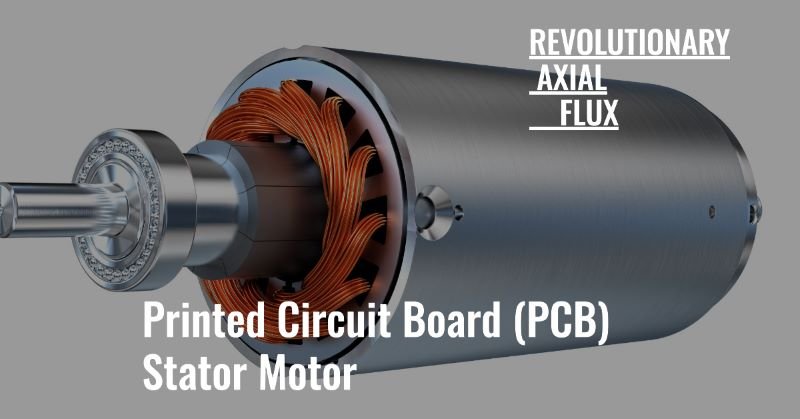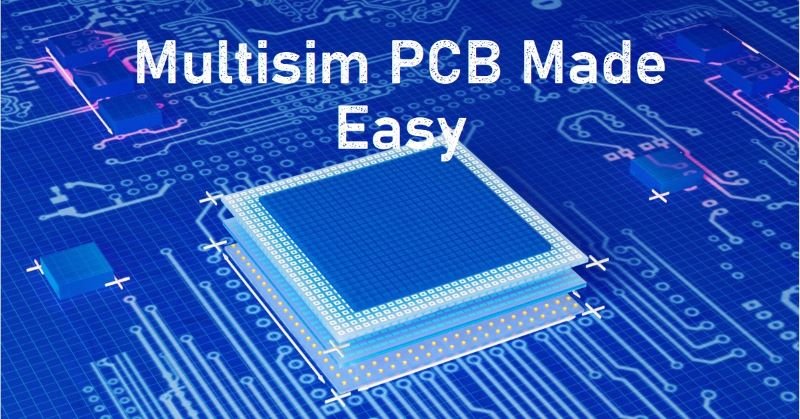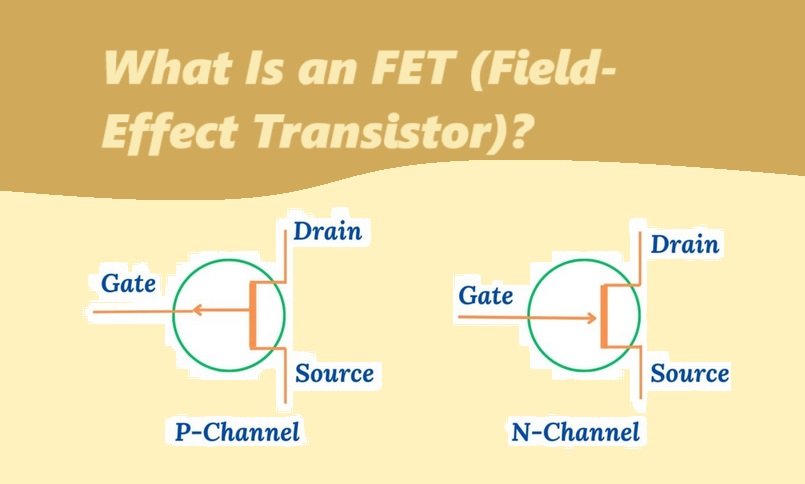Revolutionary Axial Flux Printed Circuit Board (PCB) Stator Motor
Motors are integral components in countless applications, ranging from household appliances to industrial machinery. They convert electrical energy into mechanical motion, driving everything from washing machines to electric vehicles. The efficiency and performance of motors directly impact the functionality and energy consumption of these devices, making continuous advancements in motor technology crucial.
Overview of Traditional Motor Designs and Their Limitations
Traditional motor designs, such as radial flux motors, have dominated the market for decades. These motors operate by generating magnetic flux that radiates perpendicularly from the rotor to the stator. While effective, radial flux motors have inherent limitations, including size constraints, cooling inefficiencies, and lower power densities. These limitations restrict their performance and application potential, particularly in fields requiring compact and high-efficiency solutions.
Introduction to Axial Flux Motors and Their Advantages
Axial flux motors offer a revolutionary alternative to traditional radial flux designs. In axial flux motors, the magnetic flux flows parallel to the axis of the rotor, allowing for a more compact and efficient configuration. This design results in several advantages, including higher power density, improved efficiency, and better thermal management. These benefits make axial flux motors ideal for modern applications where space and performance are critical considerations.
Introduction to the Concept of PCB Stator Motors and the Innovation it Brings
The integration of Printed Circuit Boards (PCBs) into motor stators represents a significant innovation in motor technology. PCB stator motors leverage the advanced manufacturing techniques and material properties of PCBs to create motors that are lighter, more efficient, and easier to produce. This revolutionary approach addresses many of the limitations of traditional motor designs and opens up new possibilities for high-performance, compact motor applications.
Understanding Axial Flux Motors
Explanation of Axial Flux Motor Design
Axial flux motors are characterized by their unique design where the magnetic flux flows parallel to the axis of rotation. This design features a flat, disc-shaped rotor and stator, allowing for a more compact and efficient configuration compared to traditional cylindrical motors. The stator and rotor in axial flux motors are positioned face-to-face, creating a shorter magnetic path and reducing losses.
How It Differs from Traditional Radial Flux Motors
The primary difference between axial flux and radial flux motors lies in the direction of the magnetic flux. In radial flux motors, the flux radiates outwards from the rotor to the stator perpendicularly to the axis. This results in a longer magnetic path and larger motor size. In contrast, axial flux motors have a shorter magnetic path, allowing for a more compact design and higher power density.
Advantages of Axial Flux Design (Higher Power Density, Efficiency, etc.)
Axial flux motors offer several advantages over traditional radial flux designs:
- Higher Power Density: The compact design of axial flux motors allows for more power output in a smaller package.
- Improved Efficiency: The shorter magnetic path reduces energy losses, resulting in higher efficiency.
- Better Thermal Management: The disc-shaped design provides a larger surface area for heat dissipation, improving thermal management.
- Flexibility in Design: Axial flux motors can be more easily integrated into various applications due to their compact size and shape.
Applications of Axial Flux Motors in Different Industries
Axial flux motors are finding applications in various industries due to their superior performance characteristics:
- Automotive: Electric and hybrid vehicles benefit from the high power density and efficiency of axial flux motors.
- Aerospace: The lightweight and compact design makes them ideal for use in aircraft and drones.
- Renewable Energy: Wind turbines and other renewable energy systems use axial flux motors for their efficiency and reliability.
- Consumer Electronics: Compact devices such as drones and robotics take advantage of the lightweight and powerful axial flux motors.
The Role of PCB in Motor Design
Printed Circuit Boards (PCBs) are essential components in modern electronics, providing a platform to mount and connect electronic components. Traditionally, PCBs are used in devices ranging from smartphones and computers to industrial control systems, offering reliable and compact solutions for electronic circuitry.
Evolution of PCBs in Motor Technology
The integration of PCBs into motor technology represents a significant evolution. Initially used only for electronic control circuits, PCBs are now being incorporated into the mechanical structure of motors. This advancement leverages the precise manufacturing techniques of PCBs to create stators, leading to motors that are more efficient and easier to produce.
Advantages of Integrating PCBs into Motor Stators
- Improved Thermal Management: PCBs can be designed with advanced thermal management features, such as heat sinks and conductive pathways, to efficiently dissipate heat generated during motor operation.
- Enhanced Electrical Performance: The precise and reliable electrical pathways on PCBs reduce resistance and energy losses, improving overall motor performance.
- Simplified Manufacturing Process: The use of PCBs in stators simplifies the manufacturing process by reducing the number of components and assembly steps required, leading to lower production costs and higher reliability.
Technical Aspects of PCB Stator Motors
Detailed Description of the PCB Stator Motor Design
PCB stator motors incorporate PCBs into the stator design, replacing traditional wire windings with etched copper traces. This design allows for precise control of the electrical pathways and integration of advanced cooling solutions. The stator and rotor are aligned face-to-face, creating a compact and efficient motor configuration.
Structure and Components
- Stator: Composed of multiple layers of PCBs, each etched with copper traces to form the windings. These layers are stacked and interconnected to create a complete stator assembly.
- Rotor: Typically consists of permanent magnets arranged in a disc shape, positioned parallel to the stator.
- Housing: Encases the stator and rotor, providing structural support and protecting the motor components.
Working Principle
The PCB stator motor operates on the same basic principles as other electric motors. When an electric current passes through the copper traces on the PCB stator, it generates a magnetic field. This field interacts with the permanent magnets on the rotor, causing it to rotate. The rotation of the rotor produces mechanical motion, which can be used to drive various applications.
Comparison with Traditional Motor Stators
- Performance Metrics: PCB stator motors typically offer higher power density and efficiency compared to traditional motors due to the compact and precise design.
- Efficiency Improvements: The reduced resistance and improved thermal management of PCB stators lead to lower energy losses and higher operational efficiency.
- Case Studies or Examples of PCB Stator Motors in Real-World Applications: Examples include their use in electric vehicles, where the compact and efficient design provides better performance and range, and in drones, where the lightweight construction allows for longer flight times and improved maneuverability.
Advantages and Innovations
Key Benefits of PCB Stator Motors
PCB stator motors bring several significant advantages over traditional motor designs, contributing to their growing popularity in various applications.
Compact Design and Weight Reduction
The integration of PCBs into the stator allows for a more compact motor design. The flat, disc-shaped configuration of PCB stator motors reduces overall motor size and weight, making them ideal for applications where space and weight are critical factors, such as in electric vehicles and drones.
Higher Torque and Power Output
PCB stator motors can achieve higher torque and power output due to their optimized design and efficient use of materials. The precise copper traces on the PCB enable better control of the magnetic field, resulting in improved performance.
Better Thermal Management and Heat Dissipation
One of the standout features of PCB stator motors is their superior thermal management. The layered PCB design provides a larger surface area for heat dissipation, while integrated thermal management features, such as heat sinks, help maintain optimal operating temperatures and prevent overheating.
Cost-Effectiveness in Production
The manufacturing process for PCB stator motors is more streamlined compared to traditional motors. The use of PCBs reduces the number of components and simplifies assembly, leading to lower production costs and higher reliability. Additionally, the precision of PCB manufacturing ensures consistent quality and performance.
Innovations Brought by PCB Stator Motors
PCB stator motors are at the forefront of motor technology innovation, offering several groundbreaking features.
Customization and Scalability
The design flexibility of PCBs allows for easy customization and scalability. Manufacturers can tailor the motor design to specific application requirements, adjusting the number of layers, copper trace patterns, and other parameters to achieve desired performance characteristics. This adaptability makes PCB stator motors suitable for a wide range of applications.
Integration with Advanced Control Electronics
PCB stator motors can be seamlessly integrated with advanced control electronics, such as sensors and microcontrollers. This integration enhances motor performance by enabling precise control of speed, torque, and other parameters. It also facilitates the implementation of smart features, such as condition monitoring and predictive maintenance.
Current Challenges in the Development and Adoption of PCB Stator Motors
Technical Hurdles
Despite their advantages, PCB stator motors face several technical challenges. These include the need for advanced materials and manufacturing techniques to ensure durability and reliability. Additionally, optimizing the thermal management features and electrical performance of PCB stator motors requires ongoing research and development.
Market Acceptance
Widespread adoption of PCB stator motors depends on market acceptance. This involves overcoming skepticism from industries accustomed to traditional motor designs and demonstrating the long-term benefits and reliability of PCB stator motors through real-world applications and case studies.
Ongoing Research and Development Efforts
Continuous research and development efforts are focused on addressing the technical challenges and improving the performance of PCB stator motors. This includes advancements in PCB materials, manufacturing processes, and motor control technologies. Collaborative efforts between academic institutions, research organizations, and industry players are driving innovation in this field.
Future Prospects and Potential Impact on Various Industries
Automotive
In the automotive industry, PCB stator motors hold the potential to revolutionize electric and hybrid vehicle designs. Their compact size and high efficiency can contribute to increased vehicle range and performance, while their lightweight construction helps reduce overall vehicle weight.
Aerospace
The aerospace industry can benefit from the lightweight and compact design of PCB stator motors. These motors can be used in aircraft and drone applications, providing higher efficiency and longer flight times. Their ability to integrate with advanced control electronics also enables precise maneuverability and performance optimization.
Consumer Electronics
PCB stator motors are well-suited for consumer electronics applications, such as drones, robotics, and household appliances. Their compact design and high performance make them ideal for devices that require efficient and reliable motor solutions.
Industrial Automation
In industrial automation, PCB stator motors can enhance the performance of robotic systems, conveyor belts, and other automated machinery. Their customizable design allows for tailored solutions that meet specific industrial requirements, improving efficiency and productivity.
Final Thoughts on the Future of Motor Technology and the Role of PCB Innovations
The future of motor technology lies in continuous innovation and the adoption of advanced materials and manufacturing techniques. PCB stator motors exemplify this trend, offering a glimpse into the potential of integrating electronic and mechanical components to create more efficient and versatile motor solutions. As industries continue to embrace these innovations, the role of PCB stator motors in shaping the future of motor technology will become increasingly significant.








